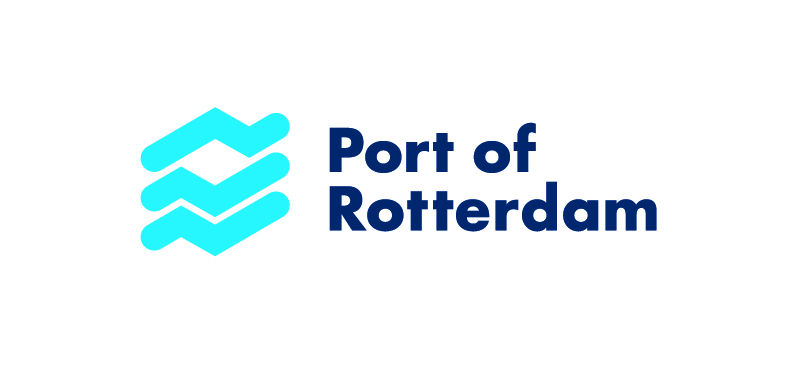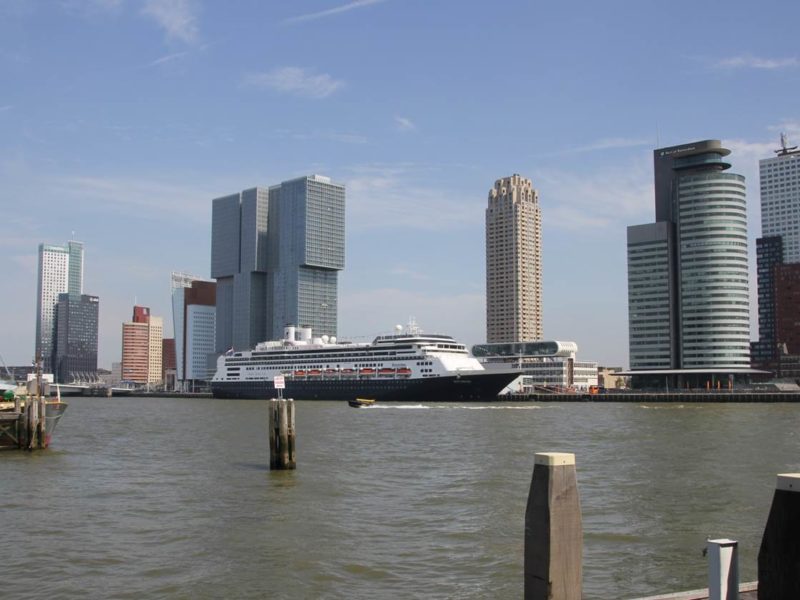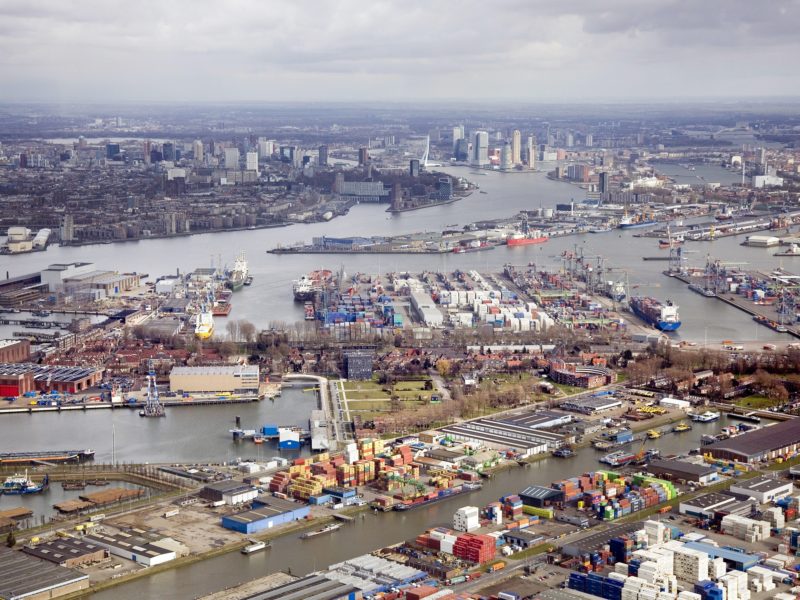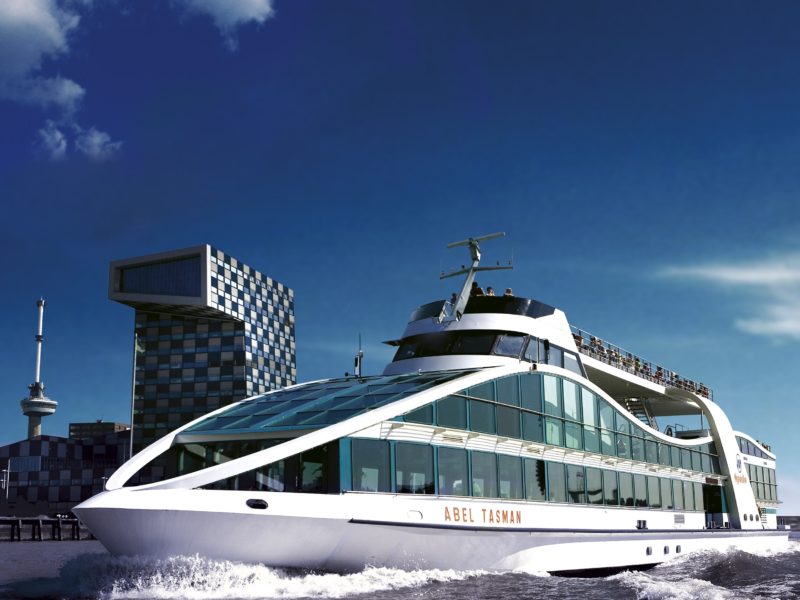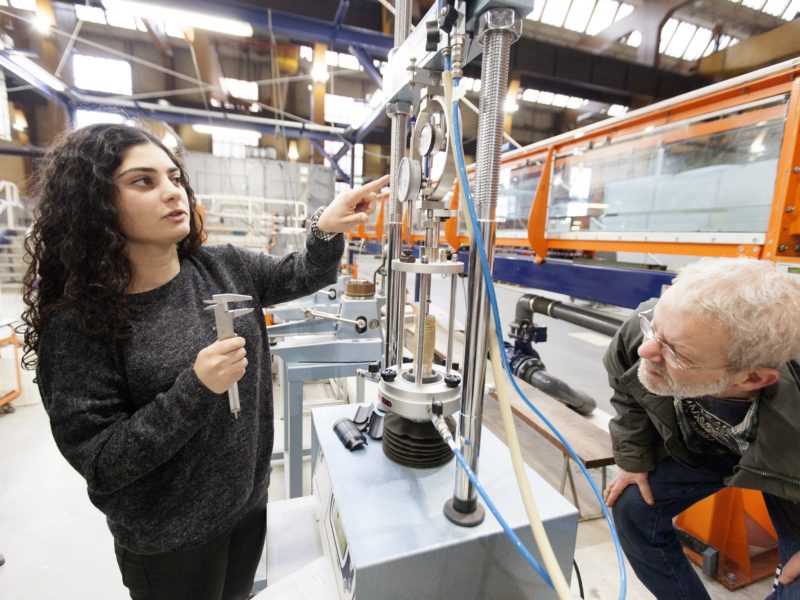Always moving. 24 hours a day. The piling machines that build, the ships that sail and the people who constantly come up with new smart solutions. With one goal: to be and remain a world city and world port. As a world city, Rotterdam has appeared in "top lists" in recent years, such as that of the Lonely Planet. The port of Rotterdam was between 1962 and 2004 the largest port in the world and nowadays the largest port in Europe. But what about the future of the port of Rotterdam? Are we smart enough and future proof? We asked Allard Castelein, CEO of the Port of Rotterdam Authority.
[caption id="attachment_34745" align="aligncenter" width="800"]
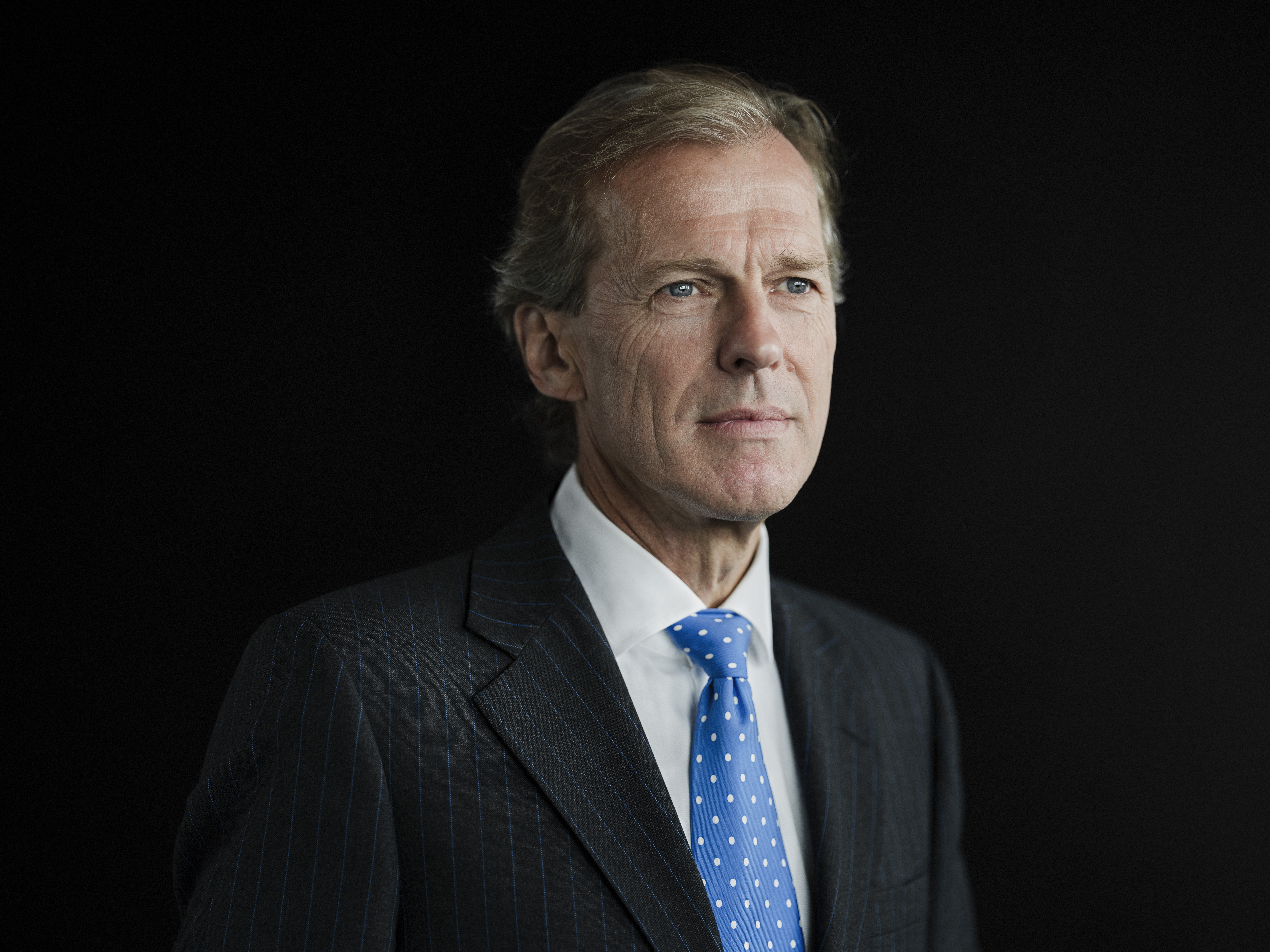
Allard Castelein, CEO of the Port of Rotterdam Authority. Photo: Frank Ruiter[/caption]
- What is your vision of the port of the future?
As Europe’s largest port, Rotterdam has a throughput of 469 million tonnes: it is a vital hub for global flows of goods and an essential gateway to the European market. Our objective is to strengthen our competitive position and the supply chain of the port of Rotterdam. Directly and indirectly, we generate 385,000 jobs and contribute 6.2% of Dutch gross domestic product. Obviously, we are proud of the statistics but the success of a port can no longer be measured in terms of throughput numbers. If we want to maintain our strong competitive position in the future, we will also have to be the world’s smartest port.
- Can you describe that smart port?
The smartest port can adapt to the changing world. The port of the future will be completely digital and climate-neutral. Take, for example, energy from wind farms, carbon-neutral sailing, sustainable industry, a circular economy. A digital port where operations are made predictable and safe by the use of real-time data. Where there are no waiting times for ships. Where ship visits are like pit stops. A port that saves time, money and emissions by making the most of Artificial Intelligence, blockchain and the Internet of Things. This all leads to greater transparency, predictability and efficiency in port operations and logistic chains. And no. We aren't there yet. But we are already taking the appropriate steps.
- What’s in it all for the maritime industry?
Existing and emerging technologies like smart sensors, artificial intelligence and blockchain make this possible, generating huge benefits in terms of saving time and money, and cutting emissions.
Thirty percent of cargo doesn’t arrive on time and shippers don't know exactly where their containers and freight are located. Apps like our own Boxinsider can help us here by tracking and tracing containers in Rotterdam.
Another example. Transport by sea involving Rotterdam as the arrival or departure point are associated with approximately 21.5 million tonnes of CO2 emissions annually. Just-in-Time shipping could cut emissions in international shipping by 35%. So the Pronto platform can make a significant contribution.
There are other areas where we can be smarter. In 2019, every shipment in the logistics chain required around 200 documents. On average, a shipper has to deal with 28 organisations: from terminals and forwarders to shipping companies and customs. For the companies involved, the digital transition can generate huge benefits. Blockchain technology is just one of the technologies with major potential here.
- How can we achieve all this?
As one of the leading ports in the world, and with our ambition to be the world's smartest port, Rotterdam is taking the lead in the digital transformation of ports and logistics. We want to create a global network of smart connected ports. That will improve efficiency in global trade lanes, and also reduce costs and carbon emissions.
The digital transformation of logistical chains plays a key role here. We see this as a step-by-step process. As a port, you start with yourself and your port community, and then bring the hinterland into the process of digital transformation. The next step is to connect ports all over the world.
This involves processes that focus primarily on logistical efficiency and a clearer picture of logistical processes. But we are also digitally transforming all the physical activities in the port and that will generate considerable value as well.
- What is there to gain when it comes to port infrastructure?
In the future, all objects in the port – such as vessels, cranes, trains, trucks, containers, weather stations and pilot vessels – will become increasingly smarter and will be able to communicate with each other in real time through the Internet of Things.
Take our quay walls, for example. On the basis of data and simulations, it is clear that we work with generous safety margins for the design, construction and maintenance. Using smart hardware and software will allow us to model the real-life situation much more accurately and give us a better understanding of the lifespan of the concrete and the sheet piling, and the required maintenance. This will eliminate the need for diving inspections (amounting to 2 million euros) in the years to come.
Another example is our dredging activities. Every year, we remove the equivalent of 2,000, one-metre-deep, football fields from the port. That is important because, in that way, we keep the port accessible for the world's largest vessels. However, dredging is extremely expensive and it produces carbon emissions. We use data to establish a much clearer picture of where dredging is really needed and, in that way, cut carbon emissions by approximately 3 kilotonnes.
We can also optimise the utilisation of our port's capacity. Artificial Intelligence allows us to spread the use of our port better, and real-time information helps us with throughput and handling because we can make better estimates of whether a vessel can be berthed or not, whether more cargo can be carried and so on.
- Can you tell us more about the digital solutions you have mentioned?
In collaboration with businesses in the port industry, we are developing digital solutions to optimise the supply chain. We now have an expanding digital toolbox for sea operations, the port and the hinterland. I will tell you more about Boxinsider and Pronto.
When I order a book online, I can almost follow the package live. With Boxinsider, we are now presenting a similar solution for containers. Most shippers and freight forwarders still collect information manually from a range of websites about where their containers are located. That is time-consuming and error-prone. It can also cause planning errors and have costly consequences. Boxinsider puts an end to all that.
The Pronto platform follows shipping traffic as it enters and leaves the port. It also coordinates all activities – such as ship berthing, loading, unloading, bunkering and speeds – as closely as possible. Any changes to the schedule are automatically reported. Troubleshooting will be replaced in the future by planning and preventive action. Two pilot projects have been completed to check whether Pronto actually does what is intended. The results were positive. In one project, we saw a reduction in waiting time of no less than 20 percent. The other project focused on the average delay of 19 percent suffered by ships as a result of inadequate coordination during bunkering. Thanks to Pronto, this percentage was reduced to zero. That's fantastic: not only does it save us a lot of time and money, it also significantly reduces carbon emissions.
- How vulnerable is a digital port now that cybercrime is becoming increasingly professional?
As our processes become more digital, a cyber attack has a significantly higher potential impact. At present, there are 80 billion hacks worldwide every day. That is expected to increase to 8 quadrillion in five years from now. The digital transition requires a different approach to security in both your own organisation and the port. Security is about more than physical barriers: putting a fence around your organisation is no longer enough.
The digital transition also results in opportunities to learn more about the authenticity of cargo and to transport valuable cargo better and more efficiently. The emergence of smart containers will also help in this respect. Which is why we recently sent ‘Container 42’ on a trip around the world to collect data. The container, which is equipped with sensors and communications technology, monitors factors such as vibration, incline, position, sound, air pollution, humidity and temperature during the journey, and it has been fitted out with solar panels. Those data provide us with valuable insights and they will help us to build the port of the future.
Payments for goods and cargo insurance will also change as a result of the digital transition. Take the blockchain project Deliver, for example. Working with Samsung and ABN AMRO, we have now shipped the first paperless container from Korea to Rotterdam.
8 What is going to happen next?
I have shared with you some thoughts about the next steps on the road to a smart port. I have told you about new technologies, initiatives, applications and possibilities. You may think that's all a long way off. But nothing could be further from the truth: the future is now. Everything I've mentioned here is possible. Indeed: it is all closer and more realistic than you can imagine.
For example. In 2017, UPS, the courier company from America, tested drone delivery from the roofs of their vans. In October 2019, they received the highest level of certification to fly drones beyond the line of sight. What I would like to say is that the opportunities provided by the digital transformation are endless. We are now also looking for ways to use drones on our patrol vessels to conduct inspections. The future is now!
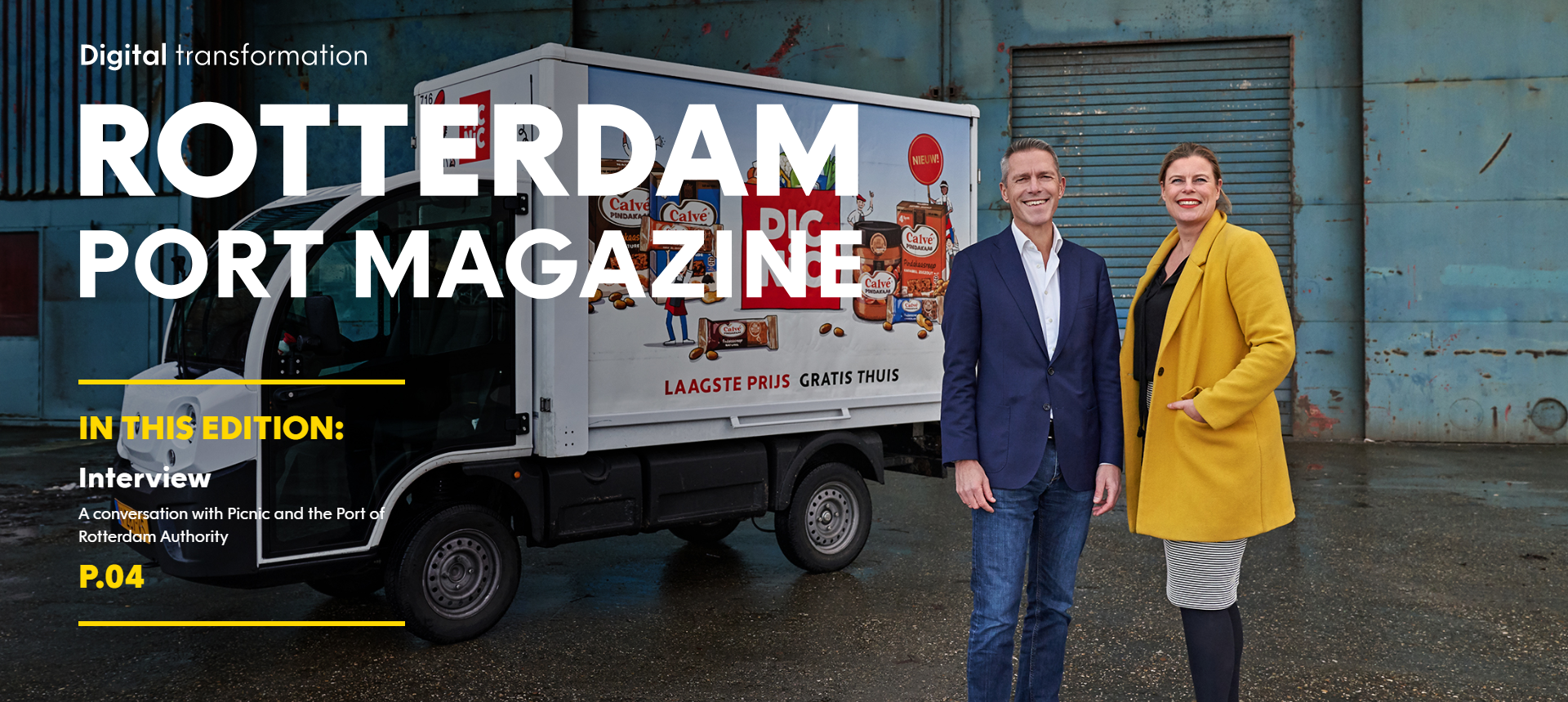
This article is part of the online Rotterdam Port Magazine, theme digital transformation. Want to know more about the digital port of the future? Read the magazine
here.
 Allard Castelein, CEO of the Port of Rotterdam Authority. Photo: Frank Ruiter[/caption]
Allard Castelein, CEO of the Port of Rotterdam Authority. Photo: Frank Ruiter[/caption]
 This article is part of the online Rotterdam Port Magazine, theme digital transformation. Want to know more about the digital port of the future? Read the magazine here.
This article is part of the online Rotterdam Port Magazine, theme digital transformation. Want to know more about the digital port of the future? Read the magazine here. 
